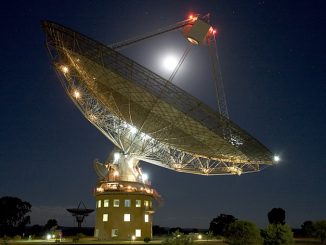
Recent discoveries by the Kepler space telescope and others indicate exoplanets are commonplace across the Milky Way and, by extension, the universe. With uncounted billions of planets presumed to exist, physicist Enrico Fermi’s famous question regarding the existence of aliens is more glaring than ever: Where are they?
“That is, I think, one of the amazing discoveries of the last century or so — that planets are common,” said Philip Lubin, an experimental cosmologist and professor of physics at the University of California at Santa Barbara.
If planets are commonplace, and if many of those worlds orbit in their stars’ habitable zones where water – and life – can, in theory exist, statistics alone would indicate life on other worlds is at least possible if not likely.
Given the lack of any such evidence to date, Lubin is heading up a mostly student-run survey to look for signs of continuous-wave laser transmissions – directed energy signatures – originating in the Andromeda galaxy
The Trillion Planet Survey envisions using small 0.8 meter telescopes, standard photometric systems and sophisticated image-processing software that could detect such directed energy beams.
“First and foremost, we are assuming there is a civilisation out there of similar or higher class than ours trying to broadcast their presence using an optical beam, perhaps of the ‘directed energy’ arrayed-type currently being developed here on Earth,” said Andrew Stewart, a student at Emory University who is helping lead the initiative.
“Second, we assume the transmission wavelength of this beam to be one that we can detect. Lastly, we assume that this beacon has been left on long enough for the light to be detected by us. If these requirements are met and the extraterrestrial intelligence’s beam power and diameter are consistent with an Earth-type civilisation class, our system will detect this signal.”
The telescopes in the TPS would effectively image slices of Andromeda in before-and-after fashion to eliminate false positives and confirm the presence of a continuous extra-galactic optical transmission if any are there.
“We’re in the process of surveying (Andromeda) right now and getting what’s called ‘the pipeline’ up and running,” said Alex Polanski, a UC Santa Barbara undergraduate in Lubin’s group.
Any detections would, of course, mark a profound moment.
“I think if you were to take someone outside and you were to point at some random star in the night sky and see that is where life is, I think you would be hard pressed to find anyone who would not look at that star and just feel something very deep within themselves,” Polanski said. “Some very deep connection to whatever is up there or some kind of solace, I think, knowing that we’re not alone.”

